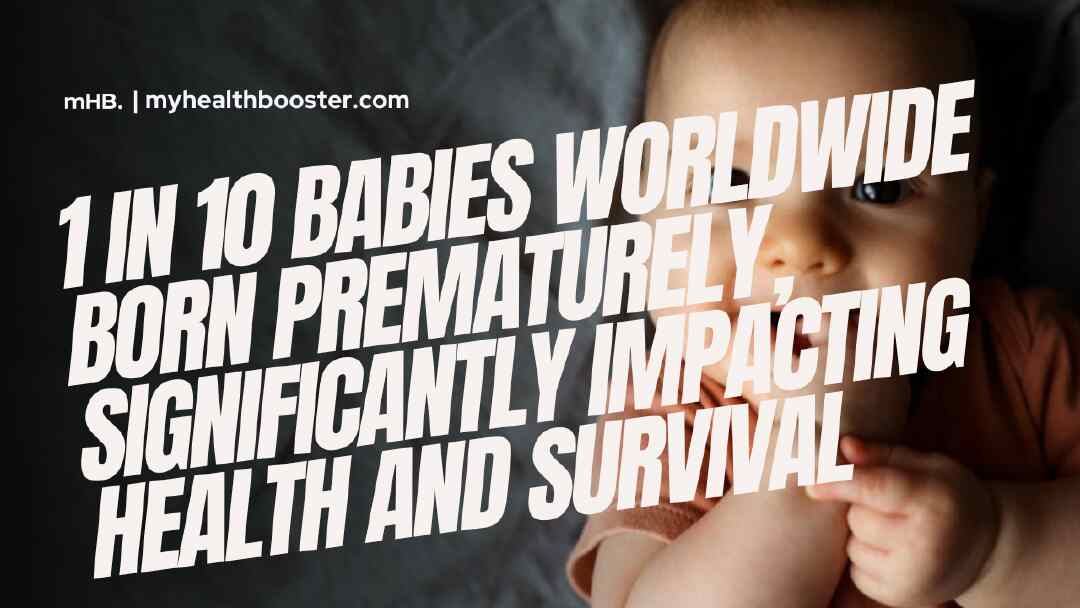High rates of preterm births linked to poor maternal health and malnutrition, urging immediate action.
In a comprehensive study published in The Lancet, it was revealed that approximately 1 in 10 babies worldwide, or an estimated 13.4 million infants, were born prematurely in 2020, occurring before 37 weeks of pregnancy. Conducted by experts from the World Health Organization (WHO), the United Nations Children’s Fund (UNICEF), and the London School of Hygiene and Tropical Medicine, the study sheds light on the alarming prevalence of preterm births and their profound effects on health and survival.
Preterm birth stands as the foremost cause of early childhood mortality, necessitating urgent measures to bolster care for preterm infants and enhance prevention efforts, particularly focusing on maternal health and nutrition. For those who survive, premature birth elevates the risk of severe illnesses, disabilities, developmental delays, and even chronic conditions such as diabetes and heart disease in adulthood.
Like various maternal health trends, no region of the world has made significant strides in reducing preterm birth rates over the past decade. The annual global reduction rate of preterm births from 2010 to 2020 was a mere 0.14%.
Dr. Anshu Banerjee, Director of Maternal, Newborn, Child, and Adolescent Health and Ageing at WHO, emphasizes the critical need for specialized care and heightened prevention efforts, stating, “Preterm babies are especially vulnerable to life-threatening health complications and they need special care and attention. These numbers show an urgent need for serious investment in services available to support them and their families as well as a greater focus on prevention – in particular, ensuring access to quality health care before and during every pregnancy.”
The research, titled “National, regional, and global estimates of preterm birth in 2020, with trends from 2010: a systematic analysis,” offers global, regional, and country-specific estimates and trends for preterm births spanning 2010 to 2020, revealing striking disparities between regions and nations. In 2020, roughly 65% of preterm births occurred in sub-Saharan Africa and southern Asia, with over 13% of babies born prematurely. The most affected countries, such as Bangladesh (16.2%), Malawi (14.5%), and Pakistan (14.3%), reported rates three to four times higher than the least affected nations, including Serbia (3.8%), Moldova (4%), and Kazakhstan (4.7%).
It’s crucial to recognize that preterm birth is not exclusive to low and middle-income countries; it affects families worldwide. High-income countries like Greece (11.6%) and the United States (10%) reported rates exceeding 10%.
Preterm births are closely tied to maternal health risks, including adolescent pregnancy, infections, poor nutrition, and pre-eclampsia. Ensuring quality antenatal care, early detection, and management of complications, as well as accurate pregnancy dating through early ultrasound scans, are critical steps to delaying labor through approved treatments.
About the Studies
This paper derives estimates from population-based, nationally representative data, employing Bayesian modeling to create internationally comparable country-level estimates for 2020. These national estimates are introduced for the first time in this study and on the WHO website.
While data on preterm birth prevalence has improved due to increased birth registration and facility-based deliveries, gaps remain, with 92 countries lacking sufficient nationally representative data. The authors call for continued dedication to enhancing data availability, quality, and sharing to enable targeted support and action where it is needed most.
Further links
Country estimates will be available on WHO’s Global Health Observatory site, here. More detail about the prevention and treatment of preterm births is available in the recently released multi-partner Born Too Soon report.
For related guidance, see the WHO’s recommendations on antenatal care and care for preterm or low birthweight infants.
